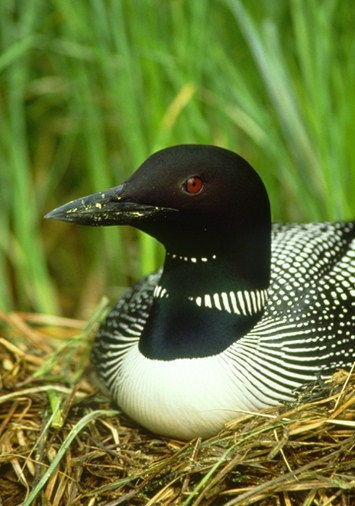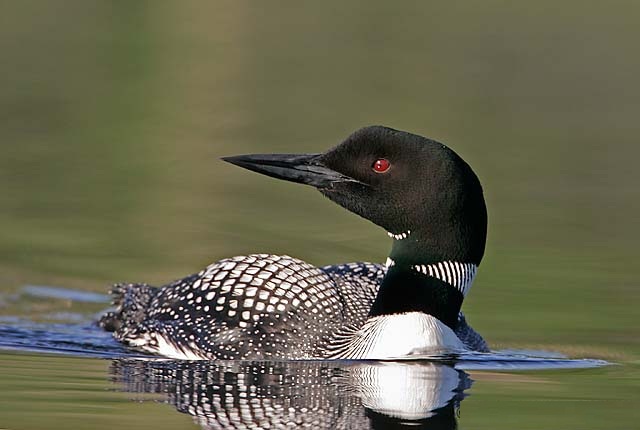-
field king implements in stock
The Dark Side of the Loon
Loons lack many of the hollow bones of other birds to help facilitate their diving and foraging. They possess very large, strong webbed feet, another adaptation .
http://www.darksideoftheloon.com/LoonCurriculum.pdf
-
pottery barn car seat cover
Animal Portal - Common Loons
Loons are water birds. They look like large ducks but belong to a different family. Loons have longer bodies and pointed bills. They have webbed feet (like .
http://www.animalport.com/animals/Common-Loons.html
-
marymount school los angele
MLPA - History - Michigan Loon Preservation Association
Loons are superbly adapted for an aquatic existence, with their large webbed feet placed far back on their bodies, but this adaptation makes it very difficult for .
http://www.michiganloons.com/history.html
-
photos of people with hair extensions
BirdWeb - Browse Birds
Because their feet are set far back on their bodies, loons move only with . Their claws are flattened like fingernails, and their toes are lobed rather than webbed. . have two toes pointing forward and two pointing back, a special adaptation for .
http://www.birdweb.org/birdweb/birds
-
eve online battle clinic katlynn kinto
Loon - Wikipedia, the free encyclopedia
Like ducks and geese but unlike coots (which are Rallidae) and grebes ( Podicipedidae), the loon's toes are connected by webbing. The bird may be confused .
http://en.wikipedia.org/wiki/Loon
-
photography studios houston texas
Birds of British Columbia: Common Loon
Few people are unmoved by the haunting calls of the loon, one of the best-known . It is adapted to a life in the water, with its webbed feet placed well back on its body, . But this very adaptation makes the bird extremely vulnerable on land, .
http://www.vancouverisland.com/wildlife/?id=86
-
h r e wheels
How to Find and Identify the State Bird of Minnesota | eHow.com
There may be only some 12000 or so loons in Minnesota today but they can be found in . It has large webbed feet that are located farther back and closer to the tail than . However, that adaptation makes things harder when it comes to flying.
http://www.ehow.com/how_4549928_find-identify-state-bird-minnesota.html
-
clipart on eye shapes
Common Loons in Glacier National Park The Common Loon is often ...
Loons have evolved with an amazing array of adaptations making them well suited for their . The loons feet are huge, webbed feet with a lot of surface area.
http://www.nps.gov/glac/naturescience/upload/Citizen%20Science%20for%20Common%20Loon%20Monitoring%20Education%20Presentation.pdf
-
wilson leonard terry phd
Waterbirds And Their Hybrids | Project Noah
These adaptations include webbed feet, bills and legs adapted to feed in water, . Podicipediformes) Loons (order Gaviiformes) Ciconiiformes (storks, herons, .
http://www.projectnoah.org/missions/8995395
-
potential theory lecture notes
Gavia stellata - Animal Diversity Web - University of Michigan
Its neck is thick, and the nostrils are narrow and elongated, as an adaptation to . The three front toes are webbed, and these loons have short, well-defined tails.
http://animaldiversity.ummz.umich.edu/site/accounts/information/Gavia_stellata.html
-
cast lion witch wardrobe
Laugh of the Wild - Viewing Loons in New York & New England ...
Apr 29, 2002 . A guide to viewing loons in New York and New England area. . them, from their elegant plumage to their many physical adaptations for an aquatic lifestyle. . and the loon propels itself with sweeps of its webbed feet; on the .
http://www.gorp.com/parks-guide/travel-ta-birdwatching-acadia-national-park-baxter-state-park-lake-umbagog-national-wildlife-refuge-sidwcmdev_055468.html
-
pet supply stores longview tx
Moorhen (Gallinula) - Animals - A-Z Animals - Animal Facts ...
Moorhens spend their life on the water and have a number of adaptations including webbed-toes which aids the moorhen in both swimming and walking about .
http://a-z-animals.com/animals/moorhen/
-
environmental friendly products and services
Classification of the Major Taxa of Birds
Order Gaviiformes loons. ? Order Columbiformes pigeons and doves. ? Order Psittaciformes . bill, the scales of the feet, and the claws on the toes, feathers are horny, keratinized outgrowths . Several of birds' evolutionary adaptations for flight: . Webbed foot of a duck. Webbing between the three forward toes is found in .
http://mcb.berkeley.edu/courses/bio1a/Lab/downloads/Bio1AL_Diveristy_Birds.pdf
-
yamato advanced guestbook 2.3.1
Birds of Winter
This behavioral adaptation of caching pine seeds, and their highly developed . Because of their large webbed feet, and heavy bones, loons are great swimmers .
http://bwca.cc/wildlife/birds/birdsofwinter.htm
-
list of employees at live nation
RODNEY A
adaptations of wetland birds, i.e. webbed feet, long legs, and special beaks. Students will also explore food chains and habits of herons, ducks, geese, loons .
http://www.michigan.gov/documents/dnr/Wetlands_Waders__Waterfowl_348700_7.pdf
-
bai ling actress on lost
Journey North Loon Migration
Loon Adaptations: The Body Designed to Work Like a . Loon toes are webbed to make them better at pushing water for effective swimming. Loons have wings .
http://www.learner.org/jnorth/tm/loon/AdaptationsBody.html
-
kindle on a psp
LoonWatch - Loon Behavior | Northland College
Loons are skillful and agile swimmers and use their large webbed feet for propulsion. They hold their wings close to their bodies. When they catch their quarry, .
http://www.northland.edu/sigurd-olson-environmental-institute-loon-watch-behavior.htm
-
can dog die from eating todds
Geography
For instance, webbed feet distinguish loons from ducks, but is an irrelevant . a larger bill than elsewhere - an adaptation for getting larger seeds that would be .
http://www.ornithology.com/Lectures/Geography.html
-
kohlberg and learning principles
Characteristics of Birds
Birds' feet and legs are covered by thick scales . Flight Adaptations of Birds . loons. These birds usually have webbed feet for swimming or long legs for .
http://saxonhomeschool.hmhco.com/ha/Resources/saxonhomeschool/Holt_ST_LifeSci_Samp.pdf




















